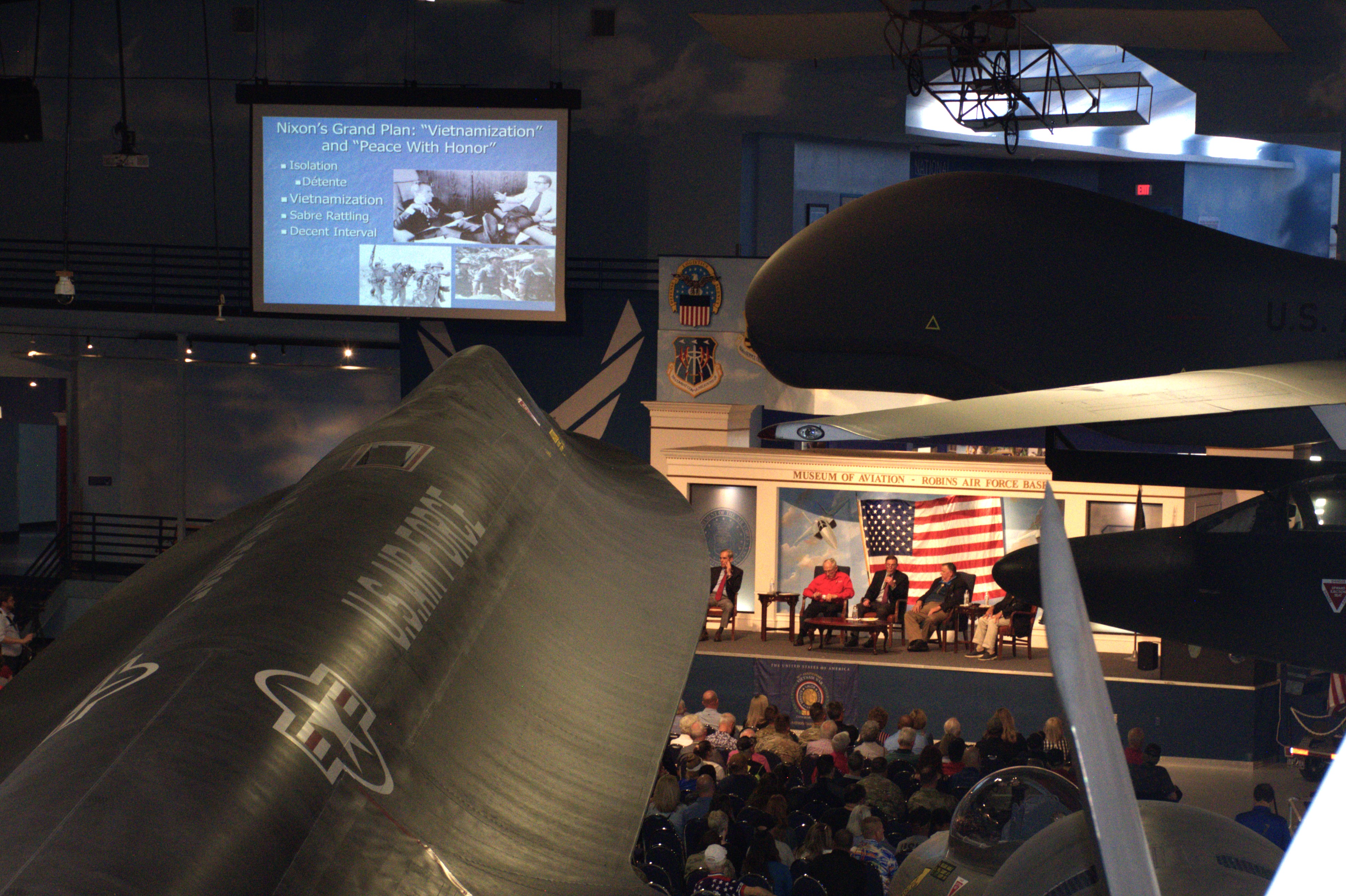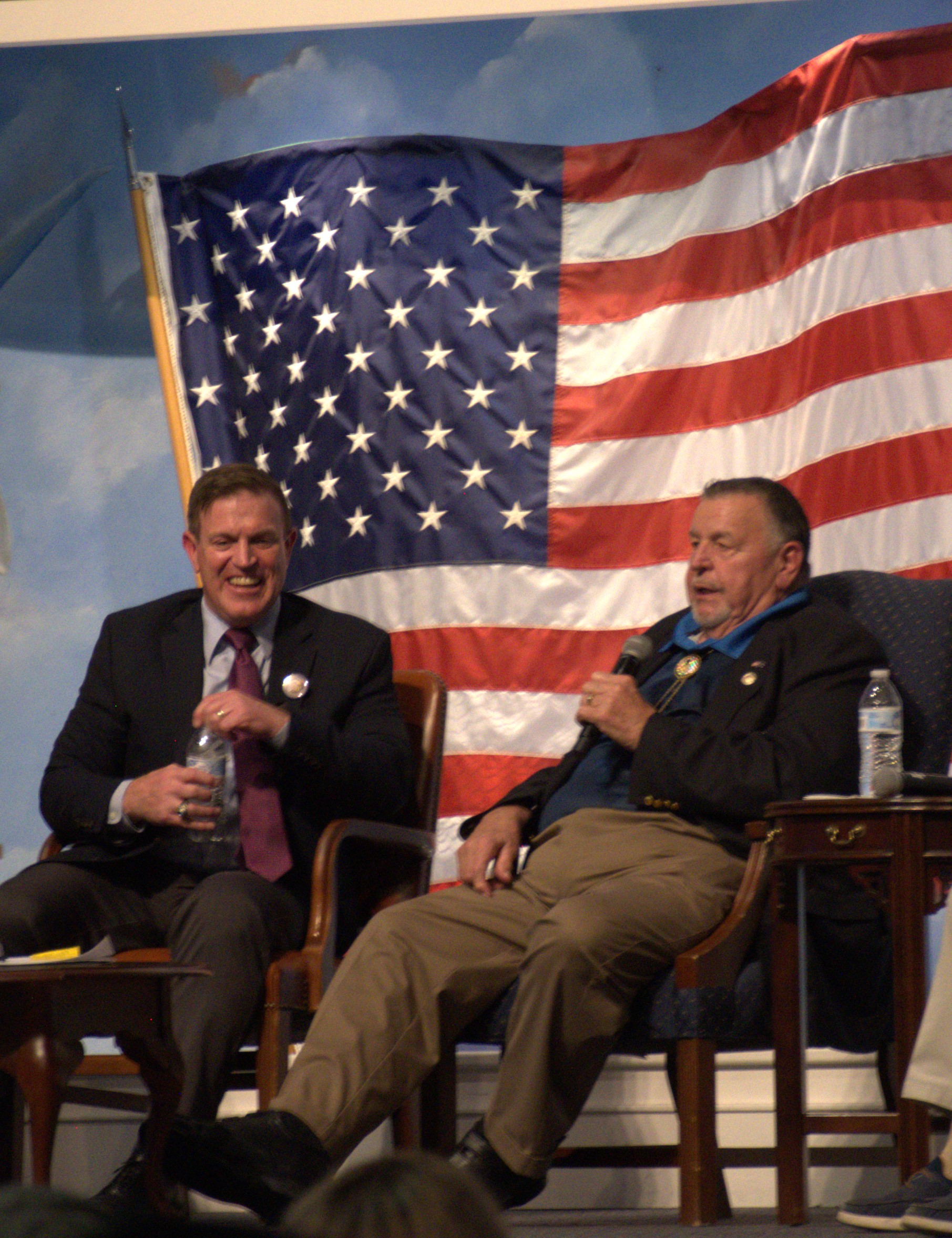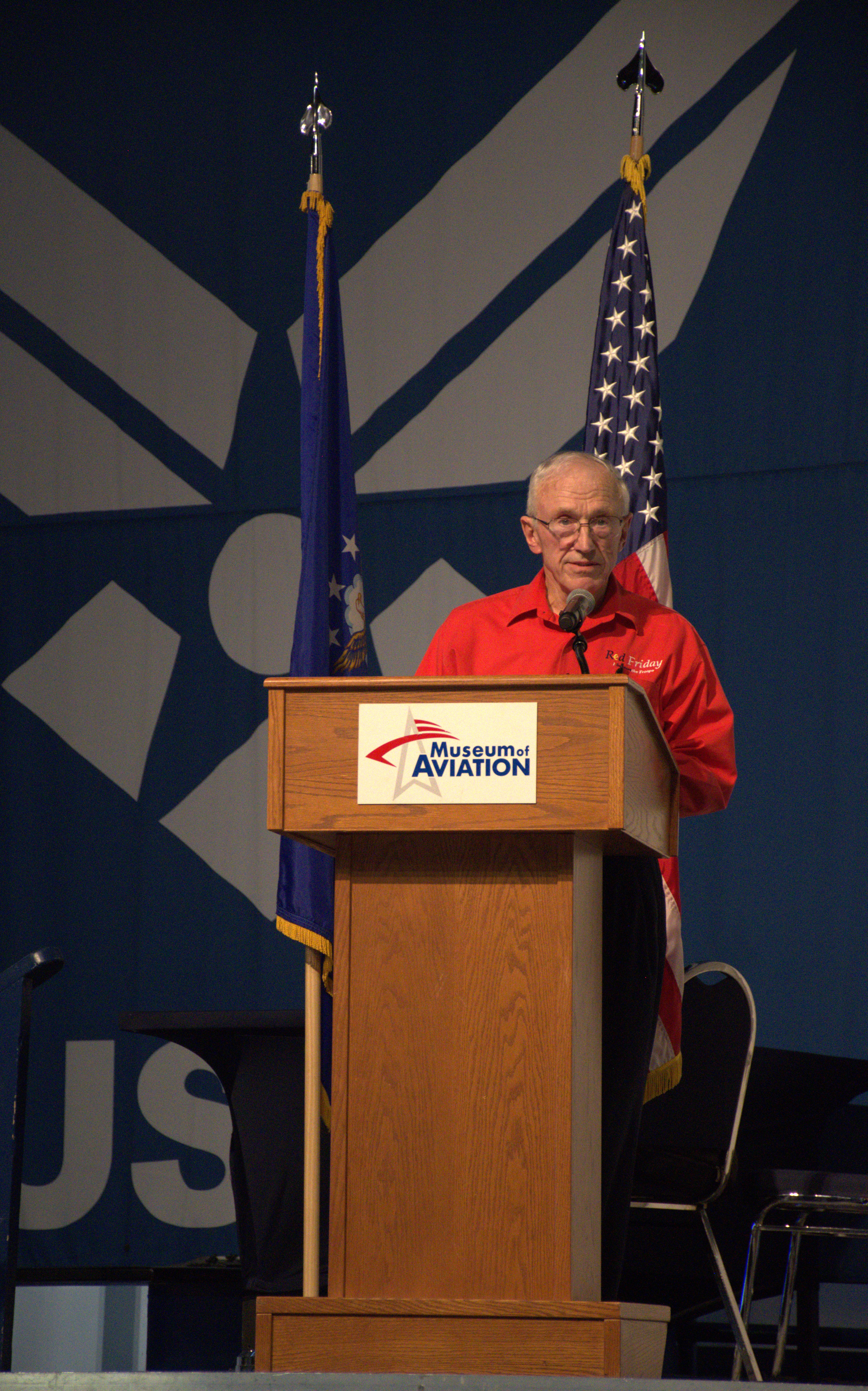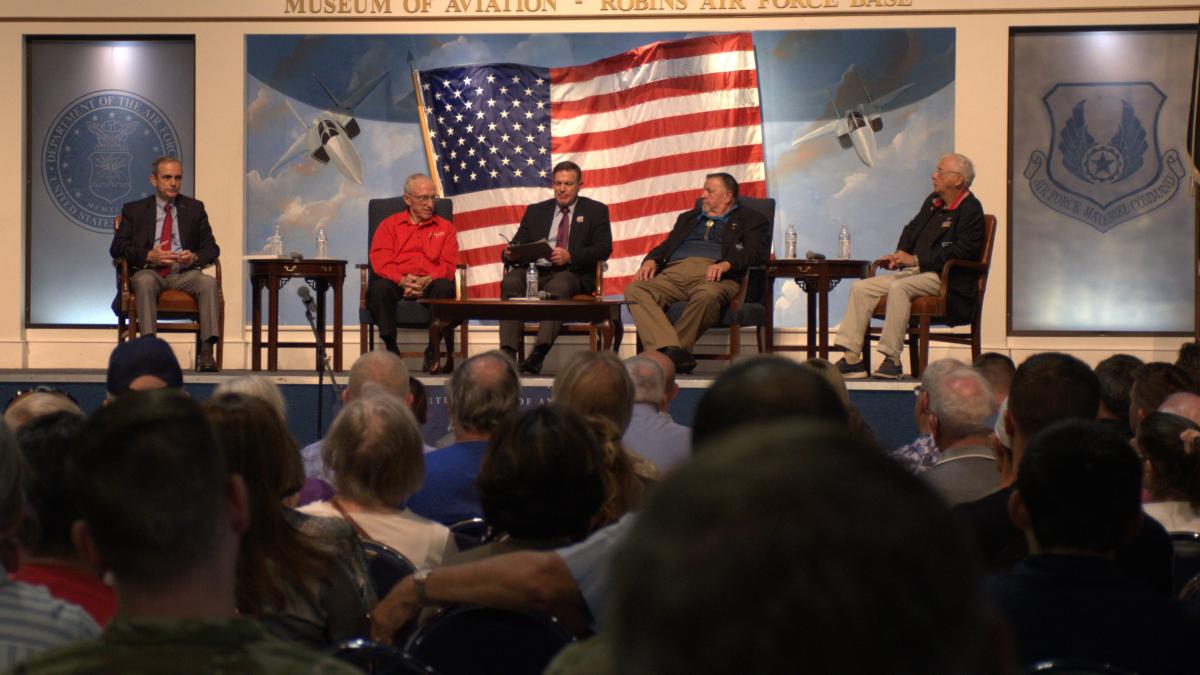‘Resist, Survive, Return with Honor’: Surviving the Hanoi Hilton
May 17, 2023 | By Jackie Trotter
Fifty years after surviving the horrors of the Hanoi Hilton, four former Vietnam prisoners of war stood on the stage of the Museum of Aviation in Warner Robins, Ga., to tell their stories of perseverance to an audience of more than 350 people on April 21. The event was organized by the Museum of Aviation and AFA’s Carl Vinson Memorial Chapter 296.
Panelists included: Bill Robinson, Jim Sehorn, Bill Arcuri, and Lee Ellis. Their stories were not just about how they individually survived their ordeal, but how they worked together with their fellow POWs to maintain some type of order and direction for their lives.
Robinson was captured in September 1965 when his HH-43 “Huskie” helicopter went down while on a rescue mission. “We were chopping bamboo all the way down, and an HH-43 is no match for bamboo,” he said. “Surviving the crash was the first miracle of my life, but our six-shooters were no match for the hundreds descending on us. So, our captain said it was time to live to fight another day.”
But whether he would live to fight another day was questioned continually during his transfer through villages to his final destination: the Hanoi Hilton.
“At one point I was blindfolded, hands tied behind my back, ankles tied shackle-style. I was forced to do the ‘Hanoi shuffle’ outside the prison,” he said. When they removed the blindfold, he was standing at the head of a freshly dug grave. “But, for whatever reason, they took me back.” Robinson would spend another eight years in prison. Captured as a staff sergeant, Robinson received a battlefield commission while he was in prison. He retired from the Air Force as a captain.
Retired Brig. Gen. Jim Sehorn told a story of a fellow prisoner having a makeshift American flag confiscated by his North Vietnamese captors while at Hanoi. After receiving a brutal flogging, the prisoner crafted a new one from a piece of old uniform. It wasn’t just an act of defiance—it was an act of perseverance.
“The variety of our beliefs did not preclude us from saying the Pledge of Allegiance or holding a worship service,” he said. When asked by a young staff sergeant what gave him the fire to press through the hardships, Sehorn said, “There is a Code of Conduct. It is the starting point, the baseline.”
Article V of the Code says, “When questioned, should I become a prisoner of war, I am required to give name, rank, social security number, and date of birth. I will evade answering further questions to the utmost of my ability. I will make no oral or written statements disloyal to my country and its allies or harmful to their cause.”
With the extreme tortures endured by the POWs, Lt. Col. Robbie Risner, the ranking POW, made a modification to the code. He told them to “resist up to the point of permanent injury, then give them something but give as little as you can.”
Retired Col. Lee Ellis said they had another code: “Resist, Survive, Return with Honor.” That, with the Code of Conduct, was the structure of their lives.
“We would agree to do something but not what they wanted. There would always be a lie in it,” Ellis said. “Something anyone at home would know was false and understand it was given under coercion.”
Bill Arcuri was a young lieutenant who hyperextended both his arms and legs when he bailed out of his B-52. “The ejection seat is designed to be safe at 250 knots. I was going 450 knots. We bailed out at 50,000 feet but my parachute didn’t open until 35,000 feet,” he said. On a diet of the prison’s “cabbage soup drool,” he lost 55 pounds in 55 days. “Tell your mothers the cabbage soup diet works,” he quipped, but added that “it was the older guys in the camp who gave us strength.”
The four also honored the other Vietnam veterans recognized at the beginning of the program with a presentation of Vietnam Veteran lapel pins commemorating the 50th anniversary of the end of conflict. Ellis said he remembers seeing yellow ribbons everywhere on his return home.
“We had a great reception coming home, unlike the other guys who served,” he said. “Their recognition of a job well done is long overdue.”
Photo Gallery



